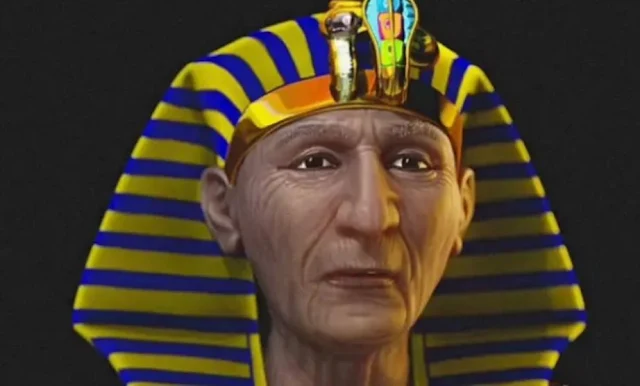A team of scientists have uncovered facial markings on ancient Egypt's most powerful pharaoh, Ramses II, which they claim reveal the distinctive features of his appearance moments before his death.
Ramses II, who ruled in the 13th century BC, was Egypt's greatest pharaoh, famed for his colossal statues and military exploits during his reign from 1279 to 1213 BC.
Scientists used a 3D model of the king's skull, layering soft tissue and skin to reconstruct his appearance at the time of his death, when he was around 90 years old.
An old man with a wrinkled face
The photo, which resembles the real thing, revealed a frail old man with a wrinkled face, and some of the features were similar to the giant statues of Ramses that still stand in museums, according to the British newspaper "Daily Mail" on June 28, 2024.
Cicero Moraes, the Brazilian drawing expert behind the new project, said: "In the current study, we conducted a very broad analysis, and compared the reconstructed face with the statues of Ramses II."
He continued: "The goal was to understand how reliable the statues are, as many imagine that the match will be good, but we saw that this is not the case, as the statues indicate a good match with the shape of the nose, and even in some cases, with the shape of the face."
The statues of Ramses II are characterized by a more refined forehead and lips and a more pronounced chin, which makes the features in the image "not realistic enough." Moraes said: "We also analyzed anthropometric and DNA data from the ancient Egyptian population, and all the tracks seem to point to a population made up of many elements that are difficult to unify."
True colour unknown
The team chose a skin tone palette seen in ancient Egyptian art, as the true colour is unknown.
They also created a greyscale version that showed the pharaoh’s eyes closed to avoid making judgements about his skin tone, but the team suggested that criticism would soon follow. “There is always criticism about any work that is published on the internet, just look at the comments on the news and the debate on social networks,” Moraes explained.
He continued: “I support freedom of expression. I personally have never blocked anyone on my networks for thinking differently from me or for insulting me, but I also have freedom of expression and I generally use it to clarify points and refute what is incoherent.”
The team also used information from a 1976 study of the mummified remains of Ramesses, which were found in 1881, which restored tissue and made new bandages.
The study also determined that Ramses II had a pronounced muscle overlay, his teeth were noticeably worn, and the pharaoh suffered from poor dental and bone health, mainly due to an abscess, which was causing him a lot of pain.
Signs of memory loss
Despite the king’s long life, his muscles showed signs of memory loss, and he had very visible veins on his forehead, and the team wanted to capture the alliances of aging in the king’s recreation.
They compiled data from hundreds of contemporary Egyptians to reveal the potential thickness of the pharaoh’s skin in different places across his skull.
Another technique was anatomical deformation, where the face and skull of a living donor – who also had a clear overlay – were digitally altered to match the dimensions of the mummy.
The final result incorporated these techniques, before being appropriately aged, and the addition of subjective elements such as clothing. It reveals what Moraes called a “wise” face.


